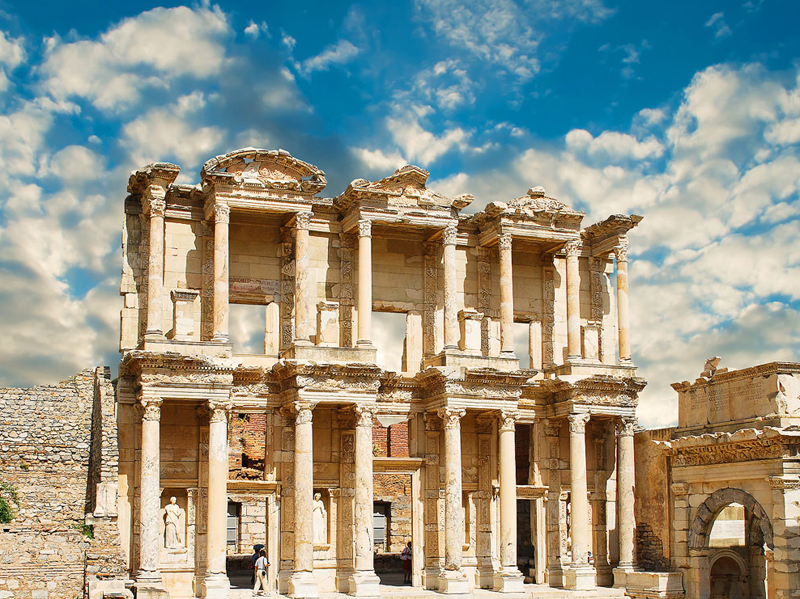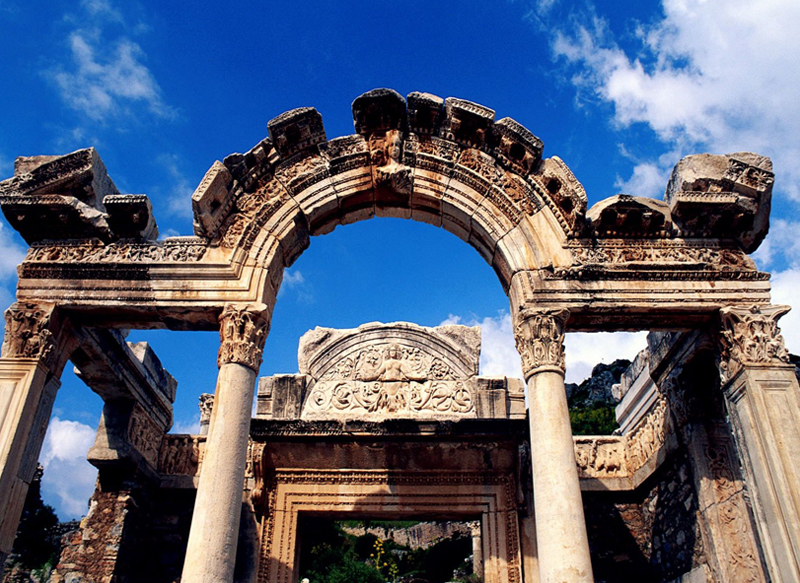This is a custom-designed shore excursion for cruisers with a limited time at Kusadasi and Ephesus.
You can visit the following sights depending on your schedule and interest.
Ephesus Ancient City; Ephesus was an important coastal city for pagans and Christians, for religious and secular reasons, including being the place Romans landed when about to take over the province of Asia. Its ancient population was about a quarter of a million.The temple of Artemis at Ephesus was sponsored by the Lydian king Croesus, designed by the Greek architect Chersiphron, and decorated with bronze statues sculpted by the renowned Pheidias, Polycleitus, Kresilas, and Phradmon.
The House of the Virgin Mary; On October 18th, 1881, a French priest, the Abbé Julien Gouyet of Paris, discovered a small stone building on a mountain overlooking the Aegean Sea and the ruins of ancient Ephesus in Turkey. He believed it was the house where the Virgin Mary had lived in the final years of her life on earth as described in the visions of the German nun Anne Catherine Emmerich (1774-1824), published in detail in a book by Clemens Brentano.His discovery was not taken seriously. Ten years later, two Lazarist missionaries from Smyrna rediscovered the building, using the same source for a guide. They learned that the four-walled, roofless ruin had been venerated for a long time by the members of a distant mountain village who were descended from the Christians of Ephesus. They called it Panaya Kapulu ("Chapel of the Most Holy"). They believed that she had died there. Every year they made a pilgrimage to the site on August 15th, the date on which most of the Christian world celebrated Mary's Assumption.
Terrace Houses; There are six residential units on three terraces at the lower end of the slope of the Bulbul Mountain. The oldest building dates back into the 1C BC and continued in use as residence until the 7C AD. Ephesus terrace houses are covered with protective roofing which resembles Roman houses. The mosaics on the floor and the frescos have been consolidated and two houses have been opened to the public as a museum.
The Basilica of St. John; It is believed that the evangelist St. John had spent his last years in the region around Ephesus and buried in the southern slope of Ayosolug Hill. Three hundred years after the death of St. John, a small chapel was constructed over the grave in the 4th century. The church of St John was changed into a marvelous basilica during the region of Emperor Justinian (527 -565 AD).
Isa Bey Mosque; Isa Bey Mosque is one of the most important works of the Turkish Aydin Emirate (Aydinogullari) who ruled in western Anatolia from 1308 to 1426. It was built in 1374 (776 A.H.) by Aydinoglu Isa Bey (1360-1390) in his administrative capital of Selçuk, near Ephesus. It is the second example of the twin-minaret mosques in Anatolia from the pre-Ottoman principalities period and is larger than many of the mosques of the time. Its architect was Ali bin Mushimish, from Damascus. The mosque was repaired in 1934 and restored later in the second half of twentieth century.
Tour price; Due to the fact that we do individually designed tours to suit visitors interest and needs we do not have a standard fee per tour. When you send us your tour requirements we will help you devise an itinerary. When this has been completed we will quote you a rate accordingly. For the exact pricing please contact us.





